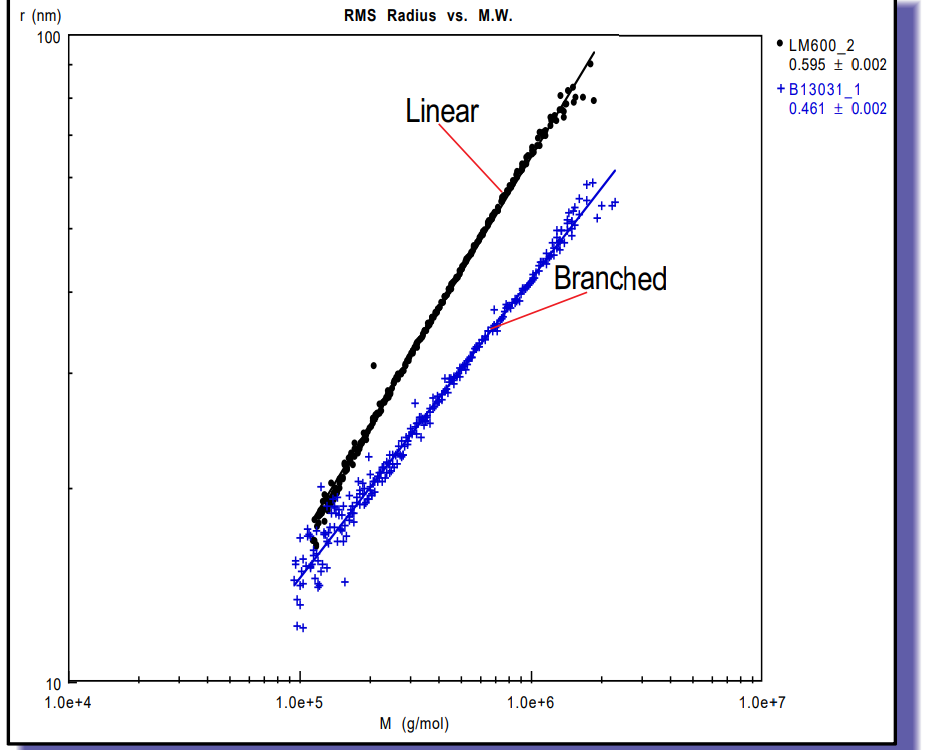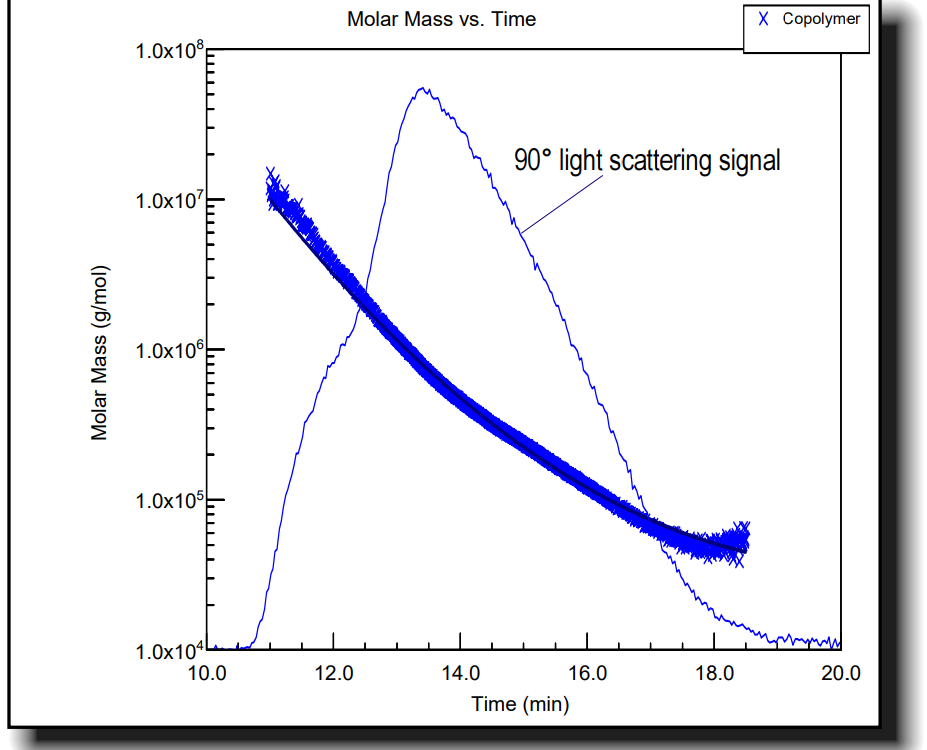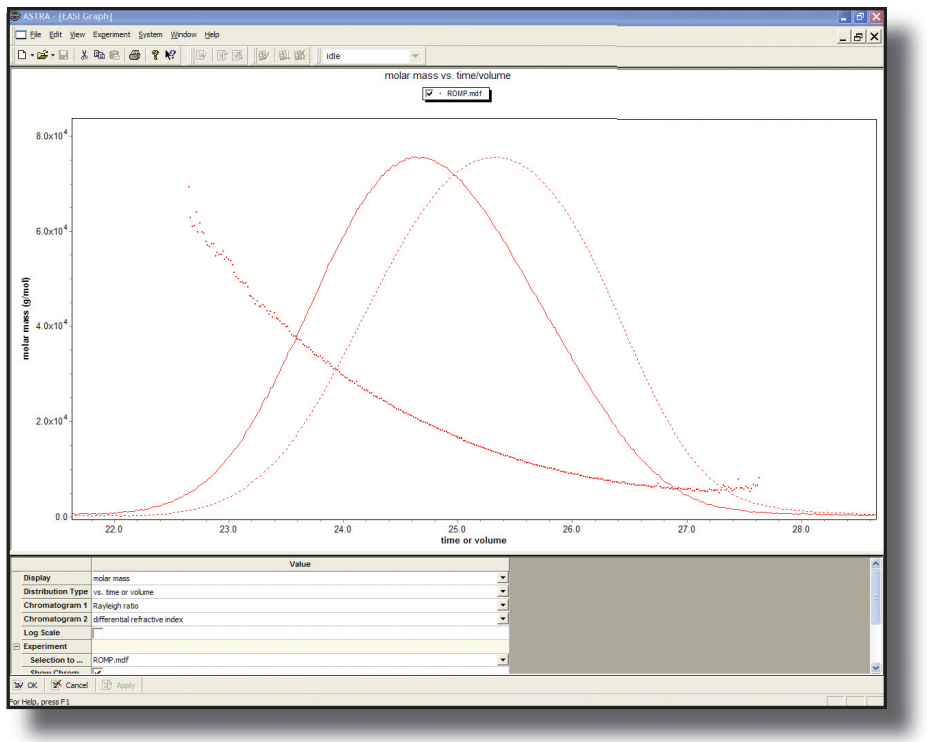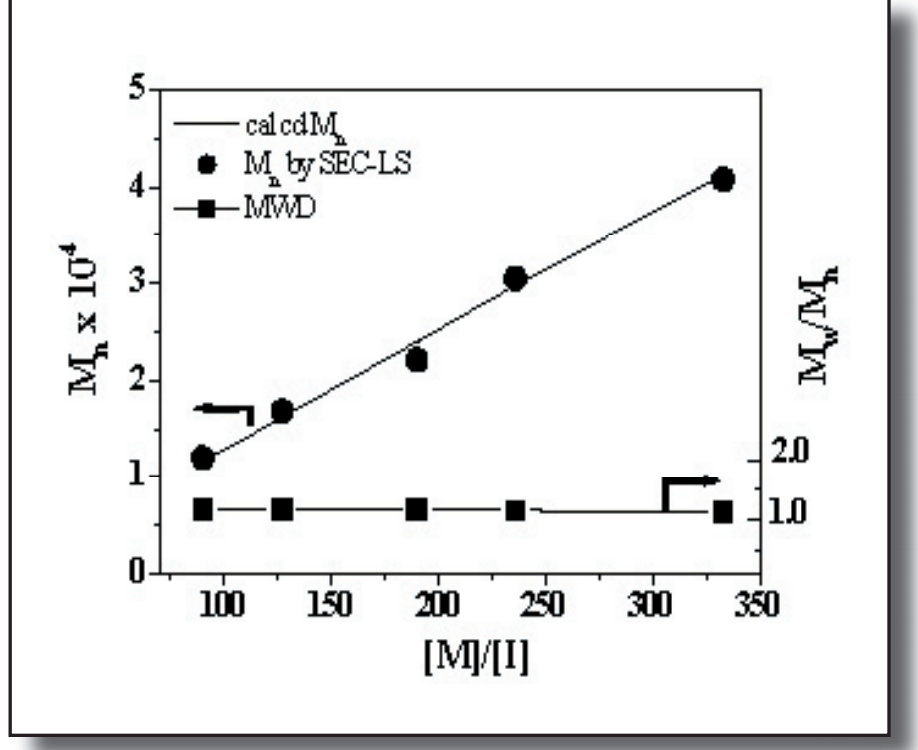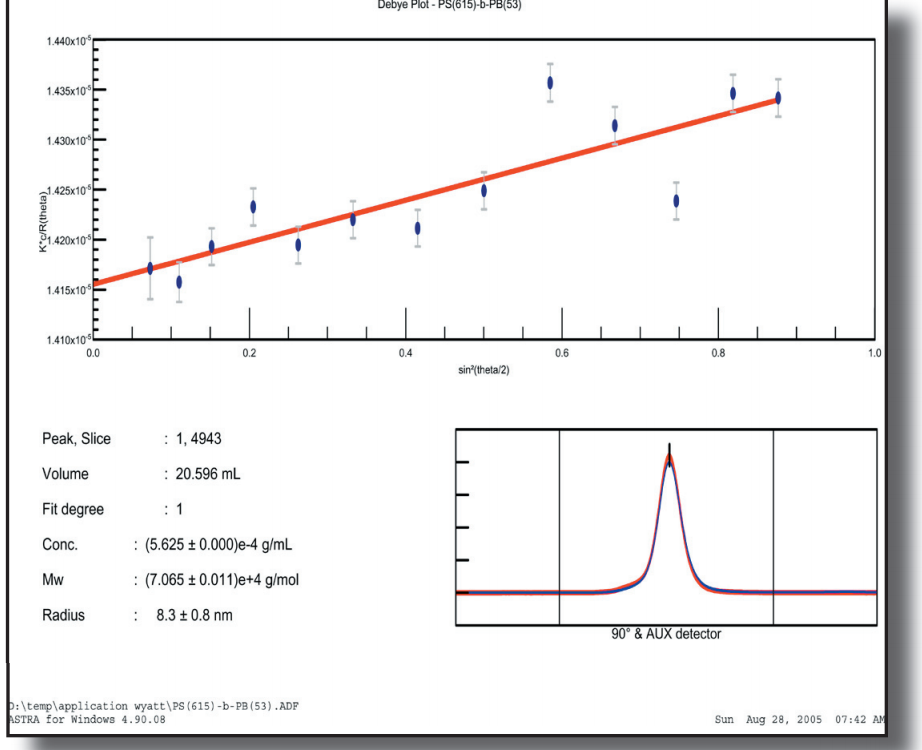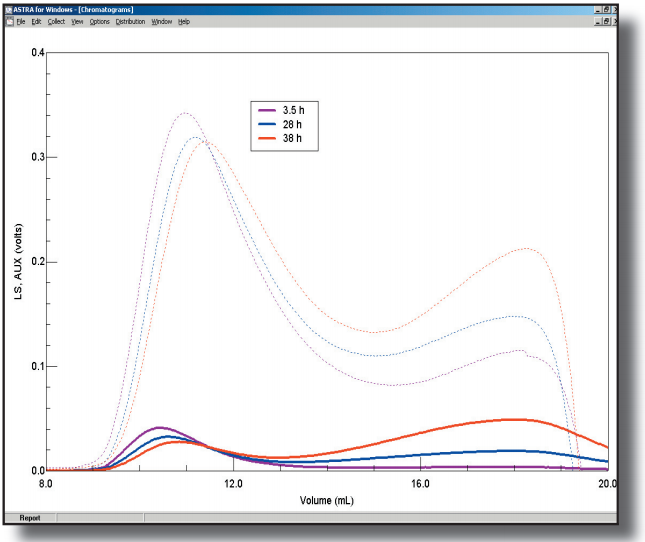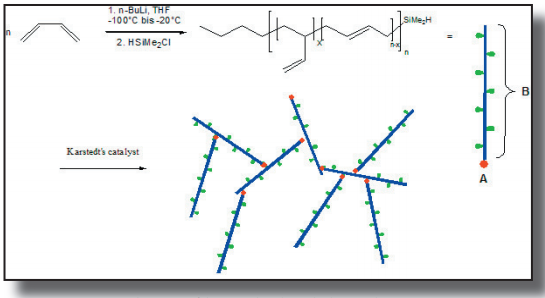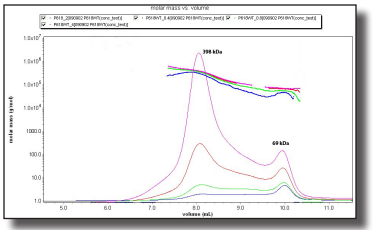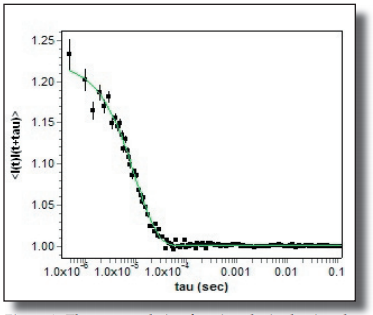The degree of branching and its distribution in a polymer affects its physical and chemical properties. Characterization with a DAWN or miniDAWN coupled to a chromatograph provides the only direct method of determining the branching ratio, gM, and, from a knowledge of the branching functionality, the branching frequency as a function of molecular weight. Other techniques are indirect at best, and are based on numerous assumptions.
Nylon refers broadly any of a number of strong elastic synthetic polyamide materials that can be fashioned into fibers, filaments, bristles or sheets. To create nylon, it is frequently analyzed by Gel Permeation Chromatography (GPC) using polymer standards and extensive column calibration. Using Wyatt Technology’s exclusive multi-angle light scattering technology, you can eliminate column calibration and characterize nylon more completely than ever before. Learn more in our application note.
Typically, polystyrene standards are used to estimate the molar masses of synthetic rubbers in SEC experiments, but by using a DAWN or miniDAWN multi-angle light scattering (MALS) detector, standards and column calibration are no longer needed. Learn more in our application note.
In this application note we set up a light scattering SEC/GPC system where both the poly(organodecaborane) and poly(organo-o-carborane) polymers were fully characterized with molecular weights and polydipersities. Read more.
Abnormal elution behavior of high molar mass polymers, such as flow rate dependence of relative peak retention time, coelution of different molar mass polymers, and the appearance of double peaks at high flow rates, have been reported. By coupling HDC with a DAWN detector, such abnormal elution behavior is explained in terms of a chromatographic mode transition from HDC to slalom chromatography (SC).
Polyisocyanates are of considerable interest due to their applications in various fields such as optical switches, liquid crystals, degradable materials, composites, and chiral recognition. For many of these applications it is desirable that the molecular weight (MW) and the molecular weight distribution (MWD) of the polymers are controlled and defined. In this application note, the polymers were characterized by SEC-LS, which furnished reliable and absolute MW data.
Polyaniline is one of the most popular conducting polymers because of its wide applications in various areas. In this study, we attempt to determine why the morphology changes in different aniline polymerization systems.
The PS-b-PB polymer was characterized by SEC using polystyrene standards, online MALS, membrane osmosis and 1H-NMR-spectroscopy. Read more in our application note.
Melt intercalation exposes polymers to thermal and shear histories that can induce degradation. An extruded macrocomposite comprising polystyrene and montmorillonite was statically annealed in an O2-rich environment at 250°C to induce localized chain scission. Read more in our application note.
Using light scattering during the GPC experiment to determine the molar mass of the branched structures is an effective and rapid way to get quantitative information for the rate of functionalization and the molar mass. Read our application note to learn more.
In order to study the oligomeric state of the protein, samples were analysed by the combination of UV spectrophotometry, multi-angle light scattering (MALS), and refractometry, all coupled on-line to analytical size exclusion chromatography (SEC).
In this application note, learn how to use a DAWN MALS detector with a WyattQELS to measure the hydrodynamic radius of Quantum dots.

